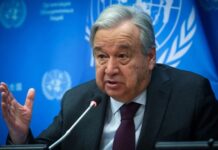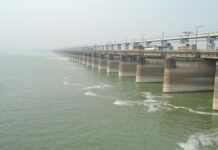Arindam Bala:
According to the U.N. FAO, at present only 11.1% land is forested in Bangladesh but it was 16% in 1980. Between 1990 and 2010 Bangladesh lost an average of 0.17% per year. Forest area of Bangladesh is declining alarmingly due to encroachment for agriculture, aquaculture, invasion of industrialization and residential area for human. After arriving of Rohingya community from Mayanmer, the receiving area and hosting community experienced immense pressure and a peach environment encountered into threat as vast areas of forest destroyed. Huge influx of Rohingya into Cox’s Bazar has exacerbated deforestation; land encroachment and degradation of camp inside and adjacent forest sites. According to a report a total of 4,300 acres of hill and forests were cut down to make temporary shelters, facilities and cooking fuel in Ukhia and Teknaf of Cox’s Bazar. 
More than one million Rohingya refugees have taken shelter in 27 camps at forest land administered under Cox’s Bazar South Forest Division. The rich forests were disturbed from encroachment, illegal felling, loss of seed trees and manifold disturbances destroy the natural regeneration that is essential for the sustainable management of the forests. According to UNHCR, Rohingya refugee crisis are the world’s largest and fastest growing refugee crisis in the world and major humanitarian emergency. This sudden influx in a new place put a huge amount of pressure on the environment causing inevitable negative impacts in the form of deforestation (Ahmed et al. 2019). According to the Divisional Forest Officer, Cox’s Bazar South Forest Division, Rohingya encroached forest land is about 4318.10 acres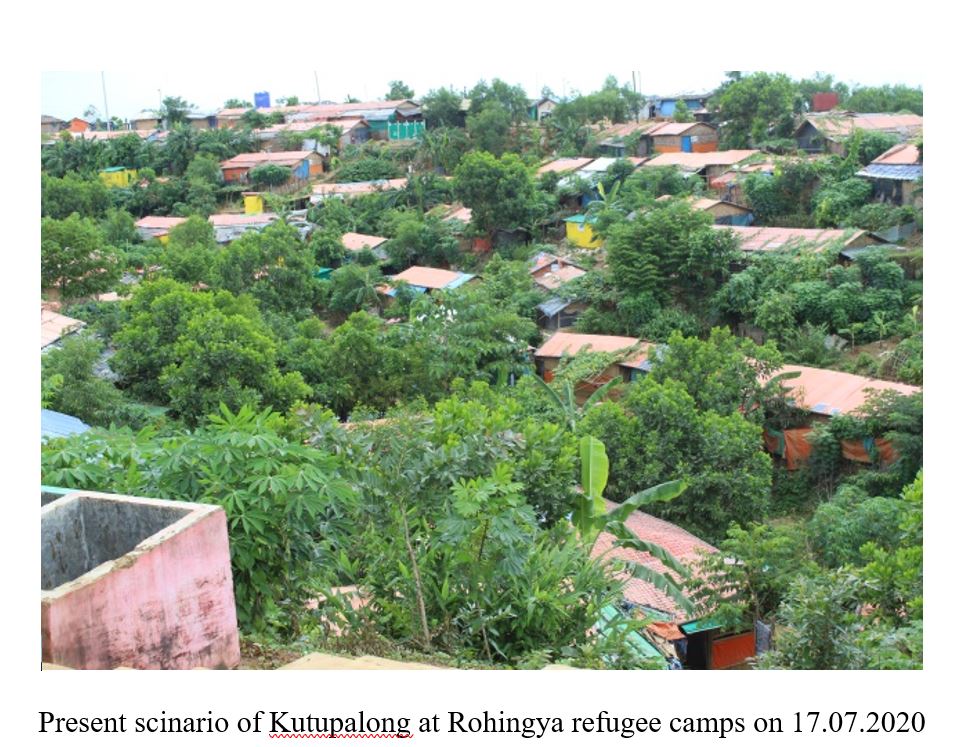
Rohingya influx into Bangladesh at Cox’s Bazar is creating major concern on taking comprehensive look at the sustainability of fragile environment, under UNHCR-CNRS Improved Natural Environment, Augment Self-resilience and Peaceful Co-existence for Refugees and Host Communities Project. For the 2020 season reforestation in the world largest refugee camp over 120 hectors has been planted adding to the 350 hectares that were plated in 2018, and 2019. Here, 15 organizations (Action Aid, Arannayk Foundation, BAT, BRAC, CNRS, DCA, FAO, FIVDB, IMO, IUCN, RDRS Bangladesh, Shushilan, UNHRC and Mukti) are working. And Centre for Natural Resource Studies (CNRS) is also driving Natural based Solution (NBS) interventions such as re-excavating Kalam Chara with slope widening and deepening, excavating water reservoir, establishing waste water treatment plants, Green Cover and Restoration of Ecosystem, Riparian Plantation in the bank of Blue-Green Infrastructure at Camp. 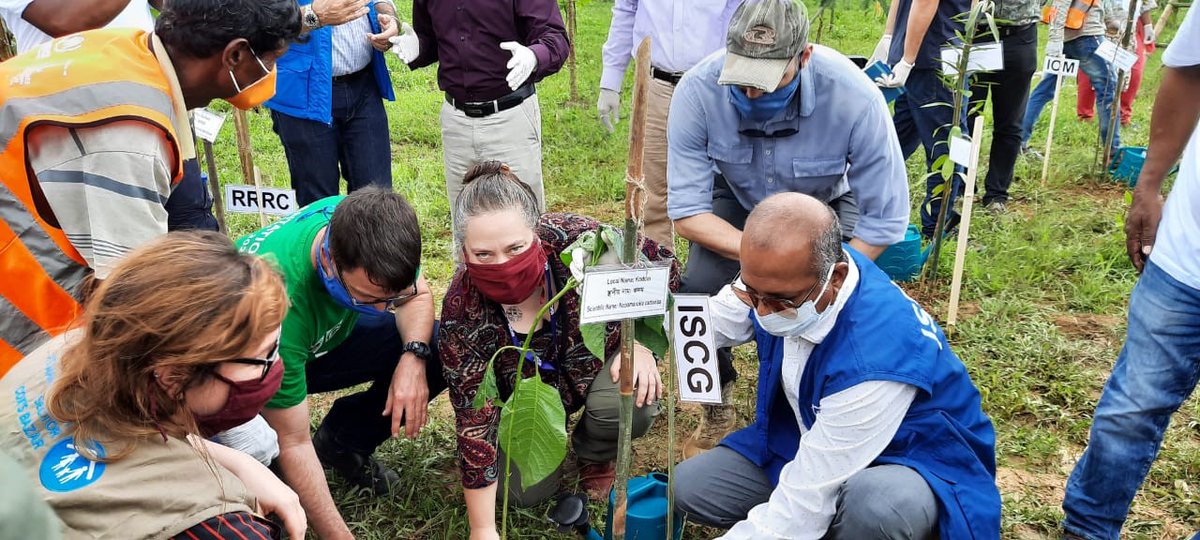
In 2019, about 174.0 ha of degraded forest lands have been planted with a mixture of fast-growing and slow growing native tree species in an aim to site improvement, soil stabilization and in the long run to support forest restoration process. Reforestation activities inside the Rohingya camps at the age of about 9-10 months old plantations. The statuses of 2019 plantations are mostly from riparian, slope stabilization, afforestation and institute/roadside plantation sites.
With unrestrictive support from RRRC, Cox’s Bazar North and South Division, Bangladesh Forest Research Institute (BFRI), and Institute of Forestry and Environmental Science, Chittagong University (IFSCU) jointly conducted the ‘Assessment of Plantation 2019’ in close coordination with all the agencies and partners in the field, i.e. World Food Program, EETWG, CNRS, UNHCR, IOM, IUCN, Arannayk Foundation, FAO, BRAC, BAT. In the assessment it has been shown that seedlings of a total of 65 tree species are recorded of which 37 species were found in riparian, 33 species in reforestation, 37 species in institute/roadside and 48 species in slope stabilization plantations. A total of 178 random sample plots distributed in the different camp and blocks plantations showed variable seedlings survivality, height and diameter growth. Survival percent varies from 83 % in slope protection to 90% in institute and roadside plantations. Different species perform differently in different site conditions and Sada koroi, Kadam, Gamar, Jarul, Haritaki, Tetuya koroi attained the highest height growth respectively. Not only that, natural regeneration and appearance of some herbs, shrubs, climber including cultivated ones reaches to species number of 72 inside the camp area.

In order to tackling adverse impact of climate change as well as further environmental degradation locally, building resilience and restoration environmental imbalance is critical challenge over the world as deforestation is becoming visible and environmental ecosystem has turned into deteriorated. In Rohingya Refugee Camp planting is part of a strategic partnership and coordination between the Government of Bangladesh and UN agencies and NGOs to restore the environment and biodiversity in and around the camps, which is particularly vulnerable to the impacts of
climate change.
The key activities of national and international NGOs like World Food Program, EETWG, FAO, BAT UNHCR, IOM, IUCN, BRAC CNRS and Arannayk Foundation, are mainly focused on preventing further degradation of streams, improving water quality and biodiversity and ensuring better ecosystem services and livelihoods of Rohinhya refugees. 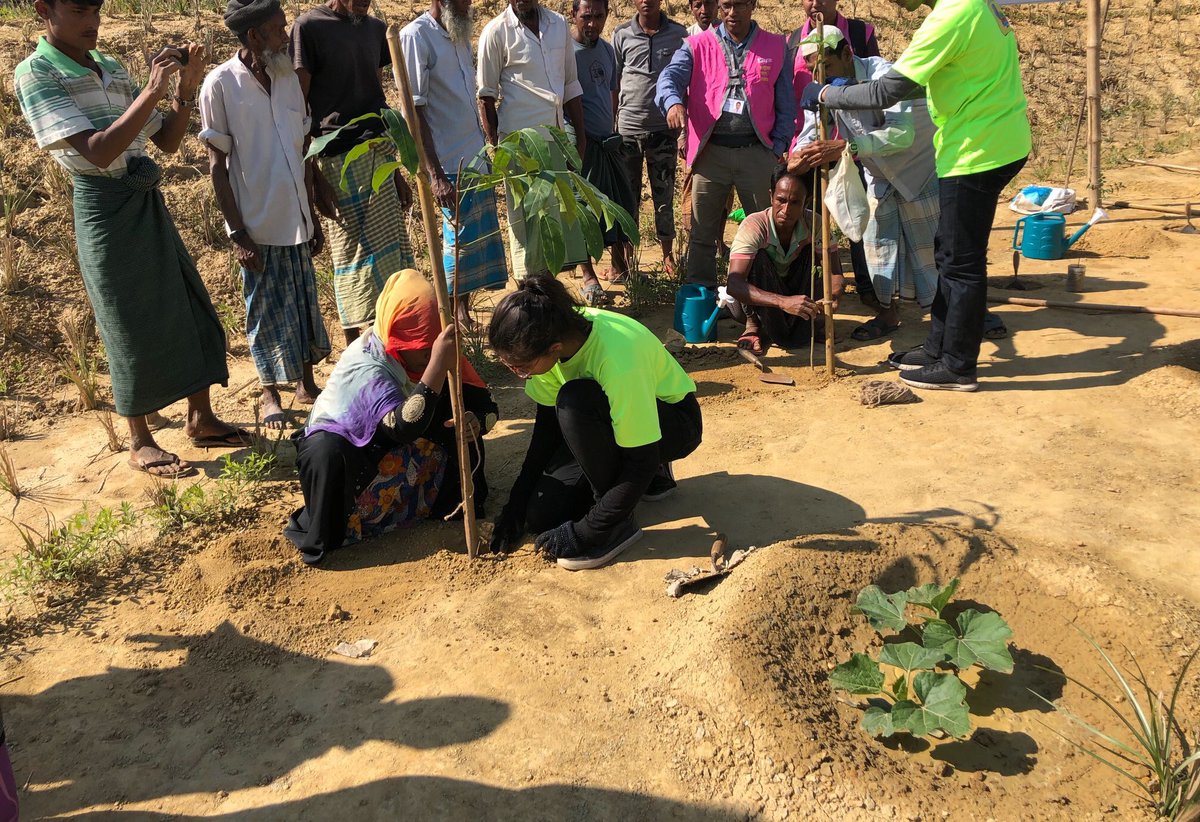
From the comparison pictorial photos it is clear that devastated environment is turning green sheen it follows that the likely desert is becoming capable in reducing pollution and providing shelter and clear air for sound breathing.
Finally, a great deal of damage has already been done to the environment, from the ozone layer to the ocean. So, it is crystal clear that reducing pollution, climatic risk and natural disaster is pressing issue for world human being. Here, to ensure natural climate solutions, reforestation in Rohingya camp sites is a great example for all areas of around the world. In this term, the world people could pursue Bangladesh’s leadership on climate change adaptation capacity as well as initiatives (Reforestation) for better tomorrow.
The writer is an environment activist and development worker. Writer can be reached at [email protected]



